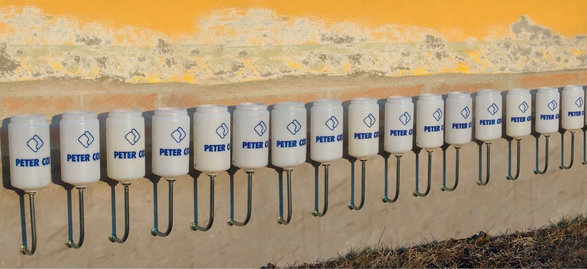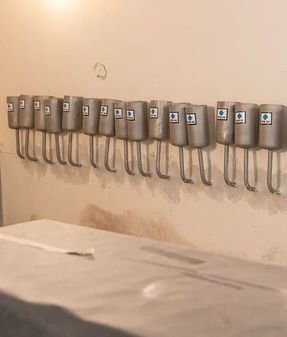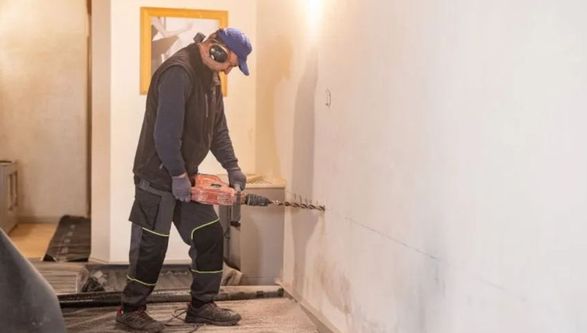
Peter Cox Barriera Peter Cox
BARRIERA PETER COX
BARRIERA PETER COX
The Peter Cox® barrier system solution
The problem of rising damp in walls is a constant in older or more traditional buildings and can also occur in more recent constructions.
Two factors always underlie this problem: the presence of water in the subsoil and the capillary action of the building material.
All building materials and their binders contain a dense network of microscopic channels capable of absorbing and transporting water through capillary action, allowing it to rise into the walls.
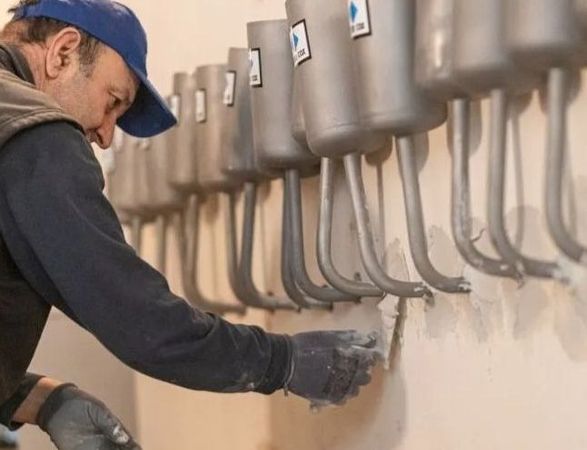
Another contributing factor is the presence of dissolved salts in the water: if the water reaches the surface and evaporates, the salts crystallize and form the classic "white streaks"; if, however, the pressure occurs between the wall and the plaster, the pressure of the salts causes cracks, swelling, and crumbling of the plaster.
INFORMATION
BRAND
Peter Cox
PRODUCTION
Made in Italy
TYPE
Chemical barrier anti-humidity system
HOW TO ELIMINATE RISING DAMP
The intervention must be carried out on walls that are still plastered , taking into account the height of the floors and always intervening 20 cm above the level of the highest point.
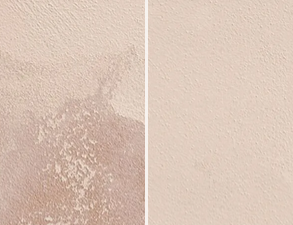
Following the intervention, the walls must be plastered up to a height of 50 cm above the existing stains, to facilitate the evaporation of the humidity they contain.

Once dry, it must be re-plastered using breathable macroporous plaster (MACROCOX), after applying an anti-saline impregnator (WATERPROOF/S).
THE PRINCIPLE FOR ELIMINATING RISING DAMP
The Peter Cox System consists of the formation of a continuous chemical barrier at the base of the wall which, by inverting the wettability angle of the capillaries, stops rising damp. The products used, based on water-based formulations , are slowly diffused into the wall through special transfusions, so as to impregnate the entire affected section, creating a hydrophobic treatment that remains stable over time .

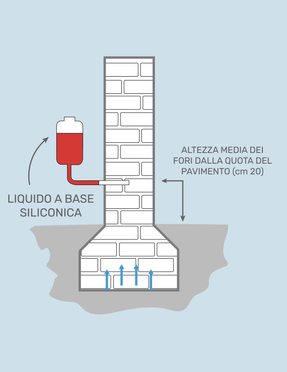

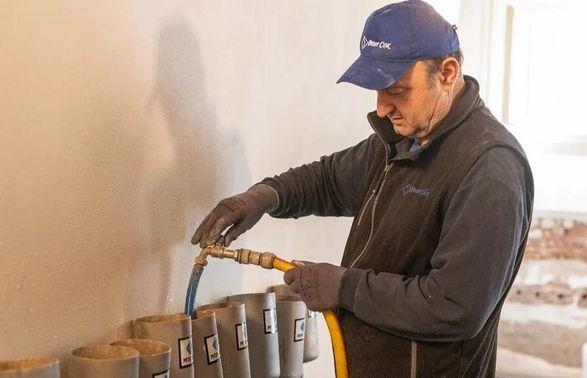
DETAIL
Furthermore, the presence of humidity in the environments gives rise to situations hygienic-environmental conditions that are harmful to the people who work or live there, worsens the microclimate creating thermal insulation problems and the formation of mould and a higher energy consumption, it also results aesthetically unpleasant.


